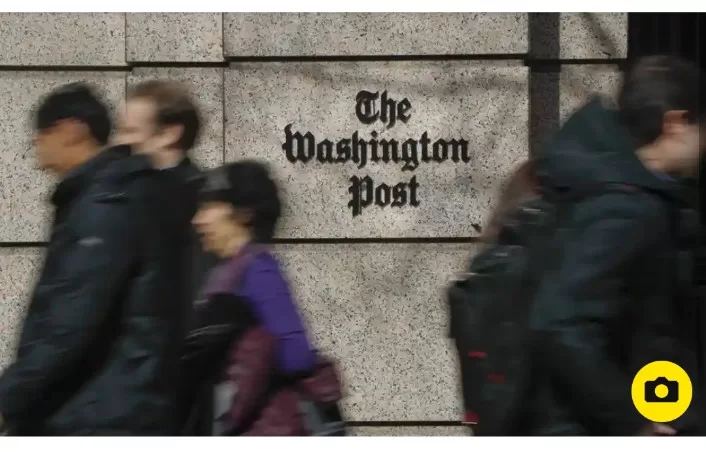In a significant and consequential development within the realm of American journalism, the Washington Post, an iconic publication, unveiled its intention on Tuesday to initiate voluntary buyout offers for its personnel. This strategic move is designed to streamline its workforce by reducing the headcount by a substantial 240 individuals.
Patty Stonesifer, the interim chief executive of this venerable institution, conveyed this pivotal announcement through an email addressed to the approximately 2,500 employees comprising the organization. In her communique, Stonesifer elucidated that the newspaper’s “subscription, traffic, and advertising projections” over the recent years have displayed an overly optimistic disposition.
Quoting directly from the Washington Post, Stonesifer expounded, “Our prior projections for traffic, subscriptions, and advertising growth for the past two years – and into 2024 – have been overly optimistic.” This stark realization, born out of an urgent imperative to channel resources into the publication’s foremost growth priorities, has precipitated the exigent decision to recalibrate the institution’s cost structure.
A pivotal juncture in this unfolding narrative is the imminent gathering of the entire newsroom scheduled for 10 a.m. on Wednesday. The overarching objective of this assembly is to engage in a comprehensive discourse on the ramifications and implications of these buyout offers. The precise magnitude of impact on the vast cohort of over 1,000 newsroom affiliates remains veiled in uncertainty.
This revelation comes on the heels of another pivotal episode, where the organization discreetly downsized seven members of its technical division, Arc XP, dedicated to cloud-based publishing software. The company spokesperson has characterized this action as part of “organizational changes” geared towards bolstering the unit’s future trajectory by prioritizing areas of utmost significance to its clientele and the industry at large.
In retrospect, a mere eight months earlier, the organization implemented a series of layoffs resulting in 20 individuals losing their positions. It was concurrently declared that 30 vacant roles would remain unfilled. Sally Buzbee, the executive editor of the Washington Post, elucidated that these measures were not undertaken lightly, and they are driven by the necessity to evolve and adapt in the quest to remain competitive. These adaptations necessitated the discontinuation of various sections, including the gaming vertical “Launcher” and the child-centric section aptly titled “KidsPost.”
The backdrop to this unfolding saga is that The New York Times reported in July that the Washington Post was on track to incur a substantial financial loss amounting to approximately $100 million in the year 2023, as per sources privy to the company’s financial standings. This confluence of events places the Washington Post in the company of numerous other media entities that have grappled with profound financial challenges in recent times. Entities like NPR, Vox Media, Gannett, CNN, the Los Angeles Times, and BuzzFeed have undergone substantial downsizing, and Gawker and BuzzFeed News even had to shutter their operations entirely.
Against this disconcerting backdrop, the Poynter Institute, a nonprofit media organization, has posed a poignant question: “For aspiring and early-career journalists, is 2023 a breaking point?”
Patty Stonesifer, in her missive this week, expressed her collaboration with the senior leadership team in presenting these buyout offers as a measure to potentially avert more painful decisions such as layoffs. The company’s spokeswoman, Kathy Baird, has asserted that these buyouts are conceived to position the organization in a formidable stance for the forthcoming year 2024 and beyond. Nevertheless, she acknowledged the emotional challenge inherent in knowing that some esteemed colleagues may opt to depart by year’s end.
As the narrative unfolds, the Washington Post remains tight-lipped, offering no further commentary on the matter. Similarly, the Washington Post Union has yet to respond to their perspective.
This development serves as a reminder of the financial complexities confronting news organizations in an era marked by shifting readership patterns and evolving digital landscapes.




